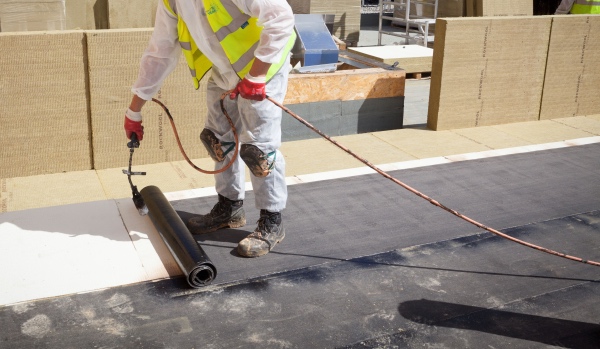
Free schools: Silence in class
With the Government planning to build 500 new free schools by 2020, Paul Barrett, Product Manager at ROCKWOOL Ltd looks at the acoustic issues in these buildings and explains how selecting the right insulation can help architects and construction professionals meet best practice requirements and deliver additional cost saving and fire safety advantages.
Earlier this month, the Department of Education approved applications for 131 new schools in the UK. Since 2015, 124 free schools have opened, with a further 376 set to open by 2020, which means the government is on track to meet its manifesto commitment to open 500 new free schools by September 2020.
Education Secretary, Justine Greening said: “We need schools that can bring out the best in every single child no matter where they’re growing up, how much their parents earn, or however different their talents are. That’s why these new schools are so important – they give us the school places we need for the future, and they also give parents more choices to find a great school place in their area that’s right for their child.”
Acoustics matter a lot in schools
Teaching and learning are acoustically very demanding activities where it’s imperative that ambient noise is kept as low as possible to minimise intrusion and distraction.
It’s no surprise that studies consistently show that quieter classrooms achieve better results. As well as impairing students’ reading, comprehension and verbal interaction, excessive noise will also compromise behaviour, attention spans and stress levels.
The most serious issues are caused by flanking transfer, where the noise is transmitted indirectly via paths, such as:
- External wall cavities
- Voids above partitions and internal corridors
- Where there are problems of excessive reverberation within the rooms themselves.
For architects and construction professionals responsible for renovating existing or constructing new school buildings, achieving the highest standards of acoustic performance is a clear objective.
In these projects, it’s important to focus on the key areas:
- Dampening sound reverberation
- Preventing noise affecting other classrooms
- Reducing the noise from outside, including wind, rain, hail, traffic, etc
- Minimising noise pollution from heating, cooling and ventilation systems, and other equipment within the space.
The existing guidance, Building Bulletin 93 (BB93) “Acoustic Design of Schools”, initially published in 2003 and currently in the process of revision, offers a clear regulatory framework for the acoustic design of schools in support or the Building Regulations.
The revised guidance will support requirement E4 of the Building Regulations, which applies to both new schools and schools formed by change of use of existing buildings. It will also support the School Premises Regulations 2012, which apply to all state-funded schools and the Independent Schools Standards, which apply to all independent schools.
Building Regulations Requirement E4 states that, “Each room or other space in a school building shall be designed and constructed in such a way that it has the acoustic conditions and the insulation against disturbance by noise appropriate to its normal use.” The revised School Premises Regulations, which came into force on the 31 October 2012, require that, “the acoustic conditions and sound insulation of each room or other space must be suitable, having regard to the nature of the activities which normally take place therein.”
In meeting these acoustic requirements, the choice of insulation material will have a major impact. Stone wool insulation is renowned for its excellent acoustic properties. The insulation’s open fibrous structure makes it ideal for absorbing and regulating noise in school buildings for the lifetime of the building.
It is also incredibly versatile, with products and systems available to suit a wide variety of typical school building applications. These include:
- Metal and standing seam, flat, green and pitched roofs
- Ground, exposed and separating floors
- Internal partitions and separating walls
- Fire protection and fire stopping
- HVAC and masonry cavity walls.
Fully tested to meet the rigorous demands of today’s legislation, and the expected changes to BB93, this type of insulation solutions are proven to reduce ambient, impact and reverberation noise in educational buildings.
Insulation has a hugely important role to play in delivering excellent acoustics for schools today, helping to optimise the teaching and learning experience within the building. Its use also has the potential to deliver a value engineered solution that can reduce the complexity and cost of installation. This can save huge sums on school building projects. Beyond these very significant advantages, the non-combustible qualities of stone wool insulation will improve safety for teachers and pupils, by providing exceptional passive fire protection and preventing the spread or growth of a fire through walls, floors and cavities.
To book a place and participate in ROCKWOOL’s Acoustics in Schools CPD, please complete the online enquiry form. For further information on stone wool insulation, and ROCKWOOL’s Acoustic Calculator, please visit the ROCKWOOL website.
Latest news

8th April 2025
First look at industry speakers for GEO Business 2025
GEO Business, the UK’s premier geospatial event, is set to return to ExCeL London on 4 – 5 June 2025, bringing together the brightest minds in the industry.
Posted in Articles, Building Industry Events, Building Industry News, Building Products & Structures, Building Services, Exhibitions and Conferences, Information Technology, Innovations & New Products, Restoration & Refurbishment, Retrofit & Renovation, Seminars
8th April 2025
Digital Construction Week 2025 announces first wave of industry-leading speakers
Digital Construction Week (DCW), the UK’s premier event for digital innovation in the built environment, is set to return to ExCeL London on 4 – 5 June 2025.
Posted in Articles, BIM, Infrastructure & CAD Software, Building Industry Events, Building Industry News, Building Products & Structures, Building Services, Building Systems, Civil Engineering, Exhibitions and Conferences, Hard Landscaping & Walkways, Health & Safety, Information Technology, Innovations & New Products, Landscaping, Retrofit & Renovation, Seminars
7th April 2025
Abloy UK provides bespoke access control solution for CPA Group’s Lanarkshire HQ
Abloy UK has supplied CPA Group with its PROTEC2 CLIQ solution to streamline access control and protect assets at its headquarters in Shotts, Lanarkshire.
Posted in Access Control & Door Entry Systems, Architectural Ironmongery, Articles, Building Industry News, Building Products & Structures, Building Services, Case Studies, Doors, Facility Management & Building Services, Health & Safety, Restoration & Refurbishment, Retrofit & Renovation, Security and Fire Protection
7th April 2025
ASSA ABLOY EMEIA: A new generation of reader is added to the Aperio digital access family
There is now a way to control access digitally, effectively and wire-free, thanks to ASSA ABLOY EMEIA…
Posted in Access Control & Door Entry Systems, Architectural Ironmongery, Articles, Building Industry News, Building Products & Structures, Building Services, Doors, Facility Management & Building Services, Health & Safety, Information Technology, Innovations & New Products, Posts, Retrofit & Renovation, Security and Fire Protection
 Sign up:
Sign up: 